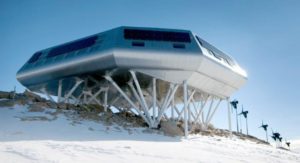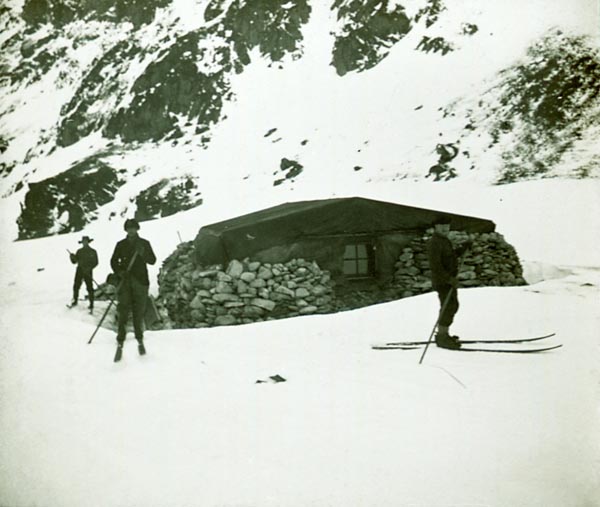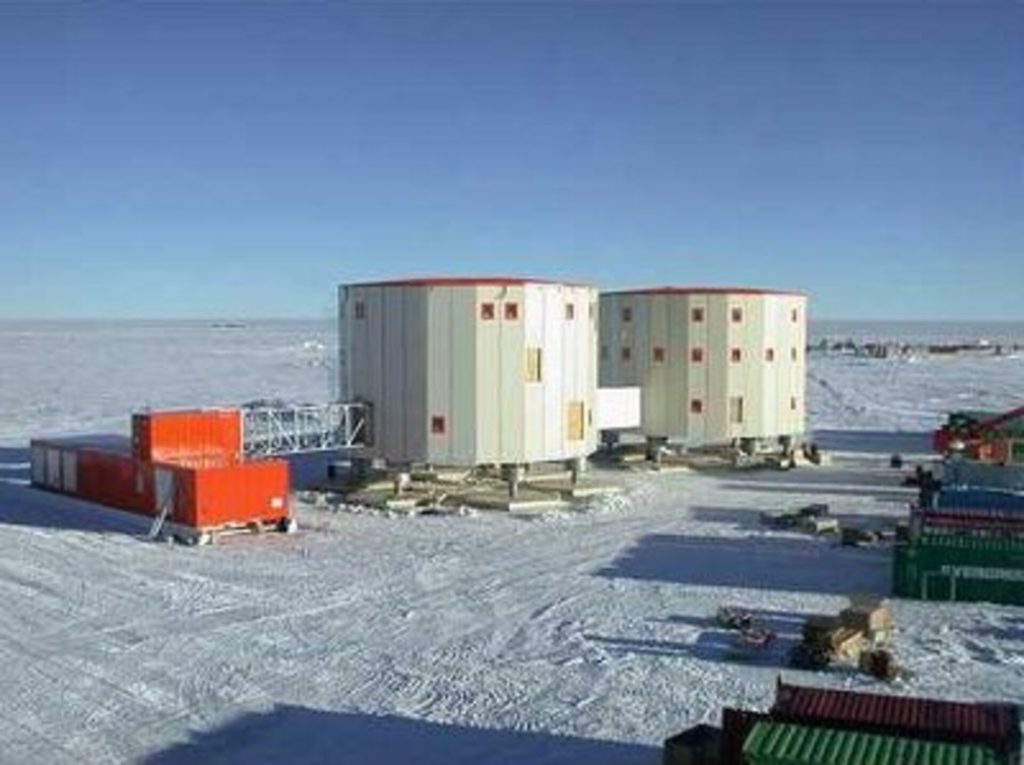
There are 74 Antarctic bases in Antarctica from 30 countries, of which 40 are permanently manned, 34 are summer only and there are also a number of small field stations dotted around the continent.
Antarctic bases have become the equivalent of embassies on the ice. They are showcases for a nation’s interests in Antarctica – status symbols to some degree. Planting a dramatic building on the ice has become the modern equivalent of explorers of old planting a flag.Antarctic players may also want to be there to take advantage of any possible change in the moratorium on mining in Antarctica which comes up for review in 2048. That’s all from a geopolitical point of view but the bases are also logistic centres for scientific expeditions and research.
Many of the modern bases are being revamped or even completely rebuilt at a cost of tens or hundreds of millions of dollars. But the beginnings of base construction in Antarctica were more humble.
First Base
In March 1903, the 33 men of the Scottish National Antarctic Expedition landed on the outlying South Orkney Islands and built a dry-stone shack, which they named Omond House. It was Antarctica’s second permanent building (after Borchgrevinck’s hut), and is maintained today by the Argentine government as part of its Orcadas base. It was used as a meteorological station and could be considered to also be the first Antarctic base.

For years afterwards, throughout the heroic age of polar exploration headed by Amundsen, Scott, Shackleton and Mawson, nothing much fancier than wooden huts went up on the white continent. Most of them are still standing and are maintained by various heritage trusts. Those early huts were very basic but gave protection from an extremely hostile environment.
With the International Geophysical Year (IGY) of 1957-58, a global project for co-operation in science, many countries set about consolidating their presence in Antarctica with the construction of bases.
The treaty’s clause giving countries conducting “substantial research activity” in Antarctica a vote in meetings to determine the continent’s future was another incentive to maintain a physical presence.
The future
One element of Antarctic architecture that has changed since the early days is energy efficiency. Most stations run on polar diesel, which is expensive, polluting and difficult to transport. Belgium’s Princess Elisabeth station, for instance, an aerodynamic pod raised on steel legs, is the first with zero emissions.
Since its inauguration in 2009 it has run entirely on solar and wind energy, and – even here – has no heating. The station’s layered design means interior temperatures are maintained from waste heat generated by electrical systems and human activity, and dense wall insulation reduces heat loss to almost zero.
The new or refurbished bases will all attempt to minimise dependence on fossil fuels and will increasingly use wind, solar and possibly hydrogen in the future.
One thing that will continue is the human presence in Antarctica and the research that goes with it.


